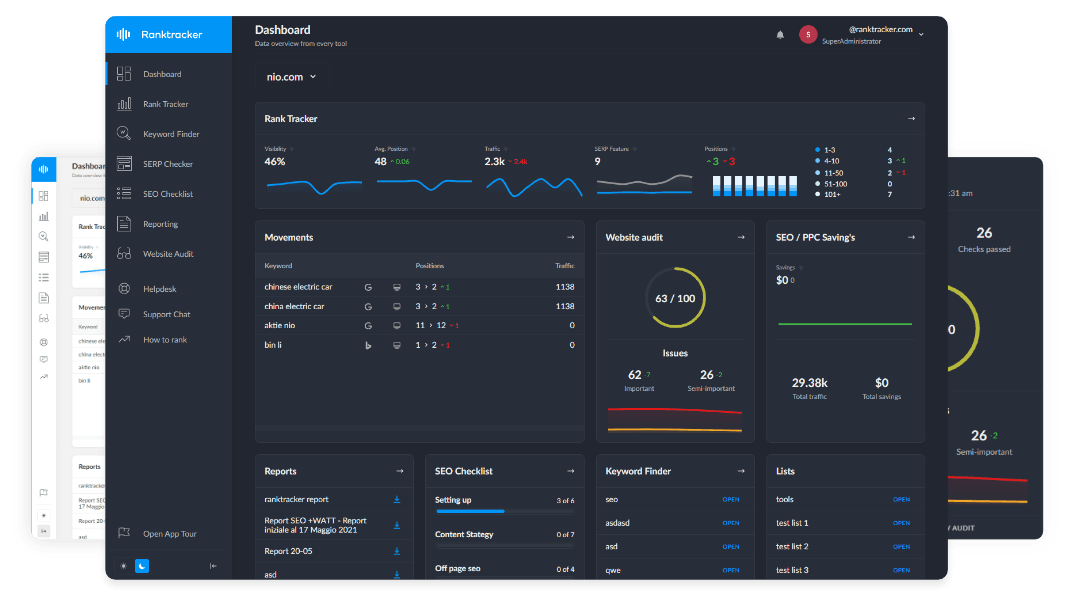
Intro
With COVID sending the majority of the working population to remote work, Software as a Service, or SaaS, has become a popular tool for businesses.
This allows businesses to utilize the software without the need to download it and have it take up space.
General SaaS Statistics and Facts
- The SaaS market was projected to reach $623 billion in 2021 with an annual growth rate of 18%.
- The use of SaaS in the healthcare industry has been growing by 20% per year.
- The benefits of SaaS according to 70% of CIOs are scalability and agility.
- Even small businesses have gotten into SaaS with nearly 78% of them invested in SaaS options.
- Microsoft is one of the top vendors of SaaS with an annual growth of 45%. Oracle is in close second at 43% growth, SAP at 36%, Adobe at 32%, and Salesforce at 25%.
- Websites are the most used application used in the public cloud followed by email.
- In 2018 about 20% of US-based R&D was spent by SaaS vendors equaling about $63.1 billion.
- In 2020 the SaaS exceeded its expected growth of $500 billion and reached $1 trillion!
- By 2025 the SaaS market is predicted to reach a value of $832.1 billion.
- About 37% of all companies have adopted SaaS in order to achieve more flexibility.
- SaaS is beginning to take over with 38% of companies saying that they are running completely on SaaS.
- The global data visualization tools market is expected to reach US$ 11.6 Bn by 2028 at a CAGR of 11.1%.
- By 2025 80% of companies are projected to have switched over to SaaS completely.
- Adobe and Salesforce are the largest SaaS companies on the US stock exchange with a market cap of $294.7 billion and $251.8 billion respectively.
- For the 5 largest SaaS companies between 2008 to 2020 there was 44 fold value increase.
SaaS Churn Statistics
- A lower churn rate is likely to be reported by SaaS Businesses with a 2-year contract or longer.
- A churn rate of between 5% and 7% is an acceptable rate.
- 5% of revenue is lost due to churn for medium-sized SaaS companies.
- For the best SaaS companies, a 100% retention rate is common.
- Companies that focus on SMBs (Server Message Block) see the highest yearly churn rate of about 58%.
- Companies that serve large businesses see an annual churn rate of 5-7% annually.
- In a PwC's study, 54% of US consumers said the experience at most SaaS companies needs improvement.
SaaS and Business Statistics
![]()
- By June 2020 there were 15,529 SaaS companies in the world.
- There are over 8,500 software companies today, mainly due to the fact that starting and building a company is 10 times faster these days.
- The yoga fitness business is one of the growing businesses, and 87% of people are running fitness clubs worldwide, that's why the gym software is growing fast in 2022.
- Of the SaaS companies worldwide, about 44% offer a free trial, 41% a 30-day trial, and 18% a 14-day trial.
SaaS Sales and Marketing Statistics
- 13% of companies have month-to-month contracts with SaaS companies.
- 48% of companies have yearly contracts with SaaS companies.
- Many SaaS companies see 2-3 times higher sales conversion rate for their affiliate marketing programs vs. other marketing channels.
- A SaaS affiliate marketing program arms businesses with an additional source of revenue in a low-risk and low-cost way that is easy to track thanks to affiliate software designed specifically for these purposes.
- 11% of companies have contracts of 3 years or more with SaaS companies.
- The Asia Pacific region is expected to have the highest rate of growth from 2022 to 2025.
- Blogs are popular with SaaS companies with 85% of the largest running and operating them and 36% of them sharing educational content.
- Podcasts are also being used by SaaS companies - about 18% of the top companies host a podcast. Additionally, PPC for SaaS has become a valuable tool, enhancing visibility and driving targeted traffic.
SaaS Adoption Statistics
- Businesses generally use multiple applications when they adopt SaaS.
- On average, companies use 34 Software as a Service applications.
- In 2017 about 86% of data workloads were taken up by Cloud, and that number is said to have reached 94% in 2021.
- One of the reasons cyber attacks may be a big deal in the future is that of all the Government organizations in the US 50% use cloud applications.
- Disaster recovery is a big justification for companies switching over to SaaS with about 38% of them adopting it for that reason.
SaaS Usage Statistics
- About a decade ago it was common for software to take about 57 hours to implement, but now it is down to 7 hours.
- The biggest users of cloud SaaS are software engineers, at 20% and then followed by architects and technical leads at 11%.
- Companies that use SaaS claim that 70% of their apps are cloud-based. This is projected to grow to 85% by 2025.
Benefits of SaaS Statistics
- One of the largest benefits and draws to SaaS is the data security as well as the ease of use.
- Businesses that implement SaaS see significantly higher employee engagement. In fact, about 86% of companies that utilize it report this.
- Another benefit of SaaS is speed, and companies that have adopted SaaS say that they can deliver 20% to 40% faster.
SaaS Trends and Growth Statistics
![]()
- About 100 countries in the world have SaaS organizations operating in them.
- Over a quarter (26%) of the European Union is operating off of the cloud.
- In the UK, 98% of businesses are operating on the cloud leaving a mere 2% still in the digital stone age.
- SaaS sees an annual growth rate of 18%.
- The biggest risk of SaaS growth comes from cyber attacks, which are especially affecting the SaaS community with the looming threat of Russia.
- The highest rate of SaaS companies is held by the U.S. with 15,000 companies. The UK trails behind with 10,000 companies, and Canada and Germany both have 1,000.
- As SaaS adoption expands, SaaS development services are becoming more in demand as businesses seek tailored, scalable, and secure cloud-based software solutions.
Conclusion
SaaS has been growing over the years at an astronomical rate, exceeding expectations.
However, with the looming threat of cyber attacks and a lack of skilled workers, this business is at great risk and on shaky ground.
Will SaaS continue to be successful? We can only get a glimpse of what the future holds through Saas Statistics.

